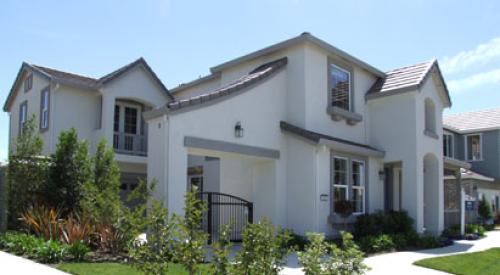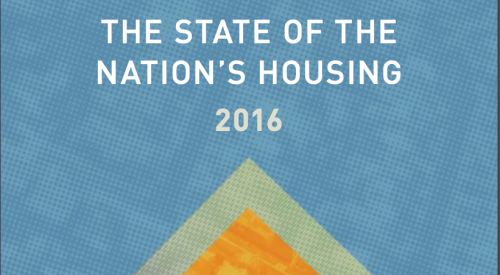Housing markets are showing signs of reviving, concludes The State of the Nation’s Housing report released today by the Joint Center for Housing Studies of Harvard University.
“While still in the early innings of a housing recovery, rental markets have turned the corner, home sales are strengthening, and a floor is beginning to form under home prices,” says Eric S. Belsky, managing director of the Joint Center for Housing Studies. “With new home inventories at record lows, unless the broader economy goes into a tailspin, stronger sales should further stabilize prices and pave the way for a pickup in single-family housing construction over the course of 2012.”
Rental markets are on the mend thanks to sharp drops in construction and an increase of over 4.4 million renters since 2005. Rental vacancy rates are falling, rents are increasing, and multifamily construction is up solidly. In contrast, the nation’s homeownership rate continues to slide.
“Surveys consistently find that the overwhelming majority of young adults plan to own a home in the future, but many would-be buyers have stayed on the sidelines waiting for the job outlook to improve and house prices to stop falling,” says Belsky. “But as markets tighten, these fence-sitters may begin to take advantage of today’s lower home prices and unusually low mortgage rates. With rents up, home prices sharply down, and mortgage interest rates at record lows, monthly mortgage costs relative to monthly rents haven’t been this favorable since the early 1970s.”
While gaining ground, the homeowner market still faces a number of challenges, the Harvard report cautions. The backlog of roughly 2 million homes in the foreclosure process will keep distressed sales elevated and could keep price increases in check in places hardest hit by foreclosures. At the same time, growth may remain muted due to the more than 11 million homeowners who owe more on their mortgages than their homes are worth. These owners cannot sell without incurring a loss and have no home equity to borrow against to fund major remodels.
“What the housing sector needs is a sustained increase in jobs to bring household growth back to its long-term pace and spur demand,” says Chris Herbert, director of research at the Joint Center for Housing Studies. “The country has seen new household formations fall well below expected long-run rates due to a falloff in young adults being able to move out on their own and a slowdown in net immigration. Even in 2011, fewer than 700,000 households were added and that’s well below the 1.2 million or more annual trend expected under more normal economic conditions.”
In the meantime, the inability of many homeowners to refinance, together with rising rents and high unemployment, has lifted the number of households spending more than half their income on housing to record heights. Between 2007 and 2010, the number of US households paying more than half of their income for housing rose by an astounding 2.3 million, bringing the total to a record 20.2 million.
“While improving housing markets will benefit the economy and many existing homeowners, it will also increase the cost pressure on others,” Herbert notes. “Even as the recovery takes hold in many markets across the country, we cannot lose sight of the long-run challenge of providing affordable housing for the most vulnerable, nor forget the damage done to foreclosure-ridden neighborhoods, which will take years to heal.”
Download the 44-page report at: http://www.jchs.harvard.edu/research/publications/state-nation%E2%80%99s-housing-2012













